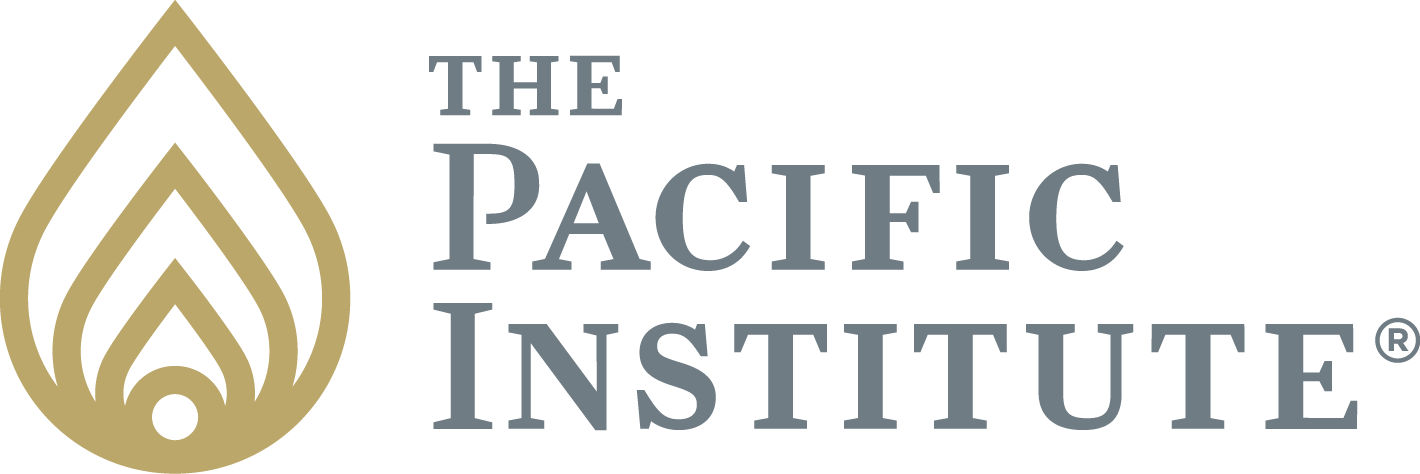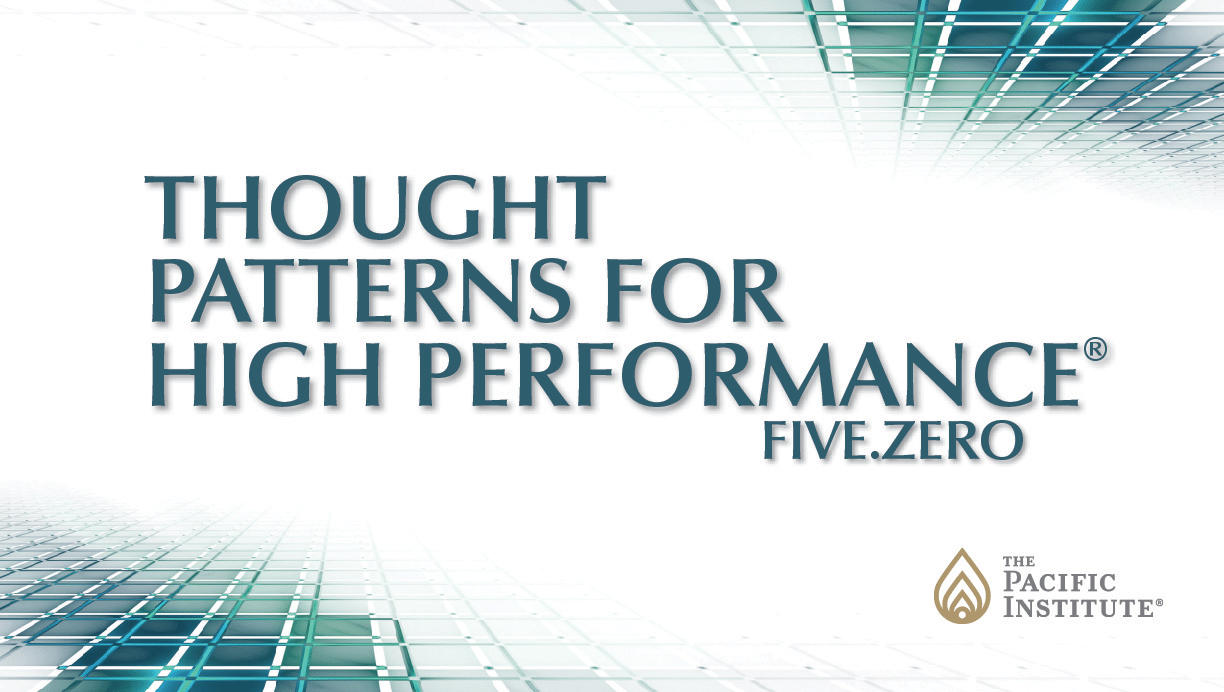Many organizations today are going through a transformational process that requires thorough, frequently dramatic change in order to position the organization for sustained success. But change today is more complex and happening at a faster pace than ever before.
Organizations are trying to adapt to change while also accommodating the greater speed and complexity of change. At The Pacific Institute®, the majority of our clients are looking for help creating sustainable adaptability to that change. And when it comes to organizational transformation, an adaptive culture matters!
A Declaration — Culture Matters!
Transform means to change; transformation means thorough or dramatic change. Transformation is what many organizations experience today. They look for ways to enhance their agility and adaptability in order to respond to greater competition, higher customer expectations, a changing market place or a merger or acquisition. Strategic planning, structural changes, process improvement and/or technology solutions — these are some of the common practices organizations invest in to position themselves for success. I describe these practices as change from the outside. While each can yield returns, change from the outside does not guarantee sustainable results. The Pacific Institute (TPI) education is based on the premise that sustainable change starts on the inside and then works its way out. To sustain change in your organization, you must create adaptability in your people. This is critical. People make up organizations, and people in organizations form groups, which form into a culture — your culture. Just like people, organizational culture can be adaptable to change… or unadaptable. So to create sustainable change, you need to create adaptability at the cultural level.
In organizational transformation, if you’re not focusing on culture, you’re leaving tremendous potential on the table.
Based on my experience with The Pacific Institute®, I know that strategy, structure, process and technology are all important, but I also know that if you are not focusing on your culture, you are leaving tremendous potential on the table. Let me now declare — culture matters. Here’s why.
Change from the Outside
In 1989, I was certified as a performance-management consultant. It was a tremendous career development step, because it allowed me to work with and learn from about 700 staff and 50–60 managers. Performance management is a behavioral science approach that attempts to improve behavior and performance by managing the environment. A simple way to explain PM theory is the formula: Behavior (B) = Heredity (H) + Environment (E). The theory is that performance (B) can be affected by setting clear goals and measurable objectives. By attaching positive or negative consequences to goals and objectives, you develop the behavior you want in your people. Essentially, you manage the environment (outside) to get the desired behavior and performance from your people (inside). This made sense to me at the time because, as a leadership coach, I could see the benefit of goals and objectives with clear measurements, accountabilities and positive or negative consequences.
Practicing What I Preach
In 1993, I moved into a leadership role that came with 13 direct reports and approximately 120 staff. The fact that my staff had very diverse functions and were located in two different cities challenged my ability to practice what I had preached. Armed with youth and energy as well as training and skills in performance management, off I went to lead my team to be the best it could be and provide the best service it could. To make a long story short, I’ll just say that while we had some good successes, we also fell short of my ambitions for the team. Something I couldn’t quite put my finger on was holding us back. As much as I tried to manage the environment, there was something getting in the way, something I couldn’t quite identify — although I could see it was not coming from the environment (the outside) but from the people (the inside).
Invisible Barriers
Something about the diverse people who made up my staff — a feeling, the way they acted, the way they spoke — seemed to impact effectiveness and results. My training had conditioned me to try to address this by managing the environment. Now, I was a pretty skilled performance-management consultant, but I consistently fell short. When I reflected back on coaching I had received from other leaders, I realized this ‘something’ was consistent with what held their teams back as well. I also came across articles that validated my dilemma. Independent studies by Harvard Business School, London School of Economics, INSEAD and other industry think tanks all show that corporations find change difficult. Over 70% of change initiatives do not deliver the required results. The most common cause of failure is insufficient focus on people. At least I knew I wasn’t crazy. This was a common experience in most organizations… but the articles didn’t tell me how to fix it.
HABE!
At this point, I was introduced to The Pacific Institute®, and through The Pacific Institute® to the science of cognitive psychology. The Pacific Institute® applies cognitive psychology to enable transformation in individuals, teams, organizations and even countries. Of the many powerful concepts and principles I learned through The Pacific Institute®, the one with the greatest utility at that moment was a simple premise: human beings have more potential than they use. This statement was true for me personally; based on my experience as a leader, it was also true for me professionally. The people on my team had tremendous potential, but something was getting in their way, and all the performance management I could throw at them wouldn’t work to unleash that potential. What I learned from The Pacific Institute®‘s education was that there are four general cognitive barriers to achieving your potential. It was not that my staff weren’t smart enough or skilled enough, it was how they were thinking. Because performance management focuses on changing the outside versus the inside, business leaders have become conditioned to working on the extrinsic (outside environment) rather than the intrinsic (individual attitude). The missing component in the behavioral approach is what cognitive theorists refer to as human agency. This simply means that humans can and do think independently of their environment.
B = H + E + Human Agency (HA)
A cognitive theory formula is that Behavior (performance) = Heredity (H) + Environment (E) + Human Agency (HA or thinking). This theory helped me understand why people behave differently even when they work in the same environment. I now understood why individual performance was limited — we were trying to change E, environment, without changing HA, thinking. This was the culprit getting in the way. It was as simple as people’s habits, attitudes, beliefs and expectations, or HABE. When I tested this theory out, it proved to be true. Just for fun, cross your arms over your chest. Now, cross your arms the other way, with the arm normally on the bottom on the top. Did you have to stop and think? This example shows how we habitualize something as simple as arm crossing. We tend to habitualize things so deeply that we can do them without… thinking. It is no different when an organization tries to implement or improve a process. If the new way is different than the way your staff have habitualized the process, it means they now have to think. Many resist because thinking is an extra effort. Through The Pacific Institute®‘s education I also learned that people regulate to the level of their beliefs, not to the level of their potential. In my case, our product-driven company needed to transition to a customer-driven company. In doing our own audit, it became clear that Habits, Attitudes, Beliefs and Expectations (HABE) were holding us back. Beliefs such as ‘that’s too hard’ might have been conditioned by the outside environment, but they were housed inside each of us. Our HABEs were not always on a conscious level, many were subconscious. HABEs Hold Us Back I was beginning to get a better picture of what was getting in the way of reaching our goals. I knew my staff had more potential than they were using; now I knew their HABEs were holding them back. I knew these HABEs were largely held on the subconscious level, where they impacted how my staff thought. I also learned that our HABEs add up to our normal. Yes, our ‘normal’. In organizations large and small, people normalize ‘the way we do things around here’. If you say to your staff, ‘you need to change’ or ‘that’s not the way we do it anymore’, they resist. It is their way of saying, ‘your normal isn’t normal. If what you’re suggesting is true, then you’re saying I’m abnormal. Now, you got my back up.’
The Power of Normal
It was enlightening for me to understand how powerful my own normals were. For example: if it is normal for me to always be on time, it bothers me if I’m late; in fact, it bothers me if other people are late. When I try to change my normals, I find I typically resist. When someone else tries to change my normals, I resist even more. Visualize holding up your hand; now visualize having someone push on your hand. The natural response is to push back. Wow, this is what I think I did with my staff. I tried to force them to change from the outside. It was a powerful insight into why change is so hard, and why resistance to change forced on us from the outside is even stronger. Normals have power. This was an amazing gate of learning to pass through. I not only understood what got in the way of change, I could finally put my finger on why people actually resisted change. Change challenges our normals. Resistance is even greater when change is forced from the outside. So, if individuals have HABEs that equal their normal, do groups of individuals have HABEs that equal a group normal? The answer is yes.
Culture and Organizational Change
Checking back into my career timeline, it was about 1996 when I began to clearly understand the impact of HABEs and the power of normal on culture. I was so drawn to The Pacific Institute® education and the potential it had that I decided to leave my corporate career and move into private practice as a project director for The Pacific Institute® . By the late 1990s, the business world began to talk about the relevance of culture in organizational change. It was mostly talk — until John Kotter and James Heskett published a longitudinal study on the effect of culture on organizational performance. In their landmark book, Corporate Culture and Performance, Kotter and Heskett presented a study of 207 companies over an 11-year period. They evaluated each company at the beginning of the study to determine whether it had an adaptive or unadaptive culture. They then correlated each company’s culture to its actual performance. Here is the summary of the amazing results. Yikes! Culture Does Matter For those of us who knew culture mattered, Kotter and Heskett’s research began to open doors to the ‘C’ suites and even to the CFOs, who until this time did not see a return on investment in culture. With these results, executives were at least looking at culture.
Turning the Invisible, Visible
Lou Tice once described culture as an invisible force that is there to perpetuate itself. This was a helpful definition for me, as it validated that you could feel but not see culture. This was true until the late 1990s, when The Pacific Institute was introduced to Human Synergistics International (HSI), a cultural assessment company. HSI had developed a survey instrument that could accurately measure culture, essentially turning what had been invisible into something visible. HSI had measured culture for over 40 years, so its process was proven and its deep database could enrich results with a historical average.
The primary presentation vehicle for HSI survey results is the circumplex (below). Briefly, the circumplex charts 12 dimensions of culture captured in three categories. A constructive culture (blue) equates with the adaptive culture introduced by Kotter and Heskett. The two types of defensive culture, aggressive/defensive (red) and passive/defensive (green), equate to Kotter and Heskett’s unadaptive culture. The culture circumplex is a great tool for our clients, as it lets them visualize their otherwise invisible cultures. As important as it is to get on the scale of culture, however, you still need to know how to get from where you are to where you want to be. This is where the marriage of the HSI assessment tool and The Pacific Institute’s transformational process of assessment, education and application coaching comes into play. I use a diet analogy: the HSI tool can reveal that you need to lose 20 pounds; The Pacific Institute will help you actually lose the weight… and keep it off.
From Good to Great
You might remember the phrase ‘good to great’ from Jim Collin’s book of the same name, but The Pacific Institute® has applied it to the company’s cultural transformation process for many years. It captures our clients’ remarkable transformations—and I’ve found a way to express it. HSI uses a formula to render survey results as a simple index score. The index rates culture on a scale of 1 to 1,000. I translate this score into a sliding scale chart to show where your culture is in terms of poor to good to great performance. Organizations fall into one of three stanines: #1 – below average, poor performing; #2 – average, good performing or #3 – above average, great performing. I use the index to give my clients a quick, clear sense of where their culture stands at the start and at the conclusion of the transformational process.
Measuring Our Success by Our Clients’ Results
Companies want to be more adaptable to change; they want to be able to accommodate the speed, complexity and consistency of change. More importantly, they want to drive results. At The The Pacific Institute®, we apply our education to help clients transform their organizational culture. We measure our success by our client’s results. Let me illustrate with two case studies I am particularly proud of. I have not used my client’s names out of respect for their privacy, but please contact me if you want to set up a conference call with them. Both are willing to share their experience.
Public-Sector Client
A public-sector organization of approximately 2,500 employees had been negatively affected by a labor conflict and had self-identified as under-performing. In 2006, an index score using the HSI tool validated this poor performance. After a three-year implementation of The Pacific Institute®‘s education, its index score jumped 111 points—a significant improvement. The result of this change in culture was improved employee engagement, improved service levels, and measured savings of $65,000,000. That’s right, $65 million. Here is the chart showing culture scores in 2006 (294) and 2009 (405).
Private Sector Client
In 2010, the financial services division of a large organization was performing well but noticed a drop in employee engagement scores. After a 12-month implementation of The Pacific Insitute’s education, its index score experienced a remarkable jump of 227 points. (actual circumplex below). Along with tremendous financial results, the transformation process led to greater balance in the personal and professional lives of team members. The employee engagement score improved by a stunning 27%. These results indicated that the organization’s ‘good performing’ divisions had moved to ‘great performing.’
Case Study #2: Good Performing to Great Performing
So, What Do We Know?
We know that culture matters. We know that working on change from the outside can have an effect, but we would argue that working from the inside out has more measurable, more sustainable results. For 40 years, The Pacific Institute® has worked with clients to achieve this type of transformational result. Whatever transformation you are going through — growth, merger, acquisition —we are confident we can help you achieve greater results.


